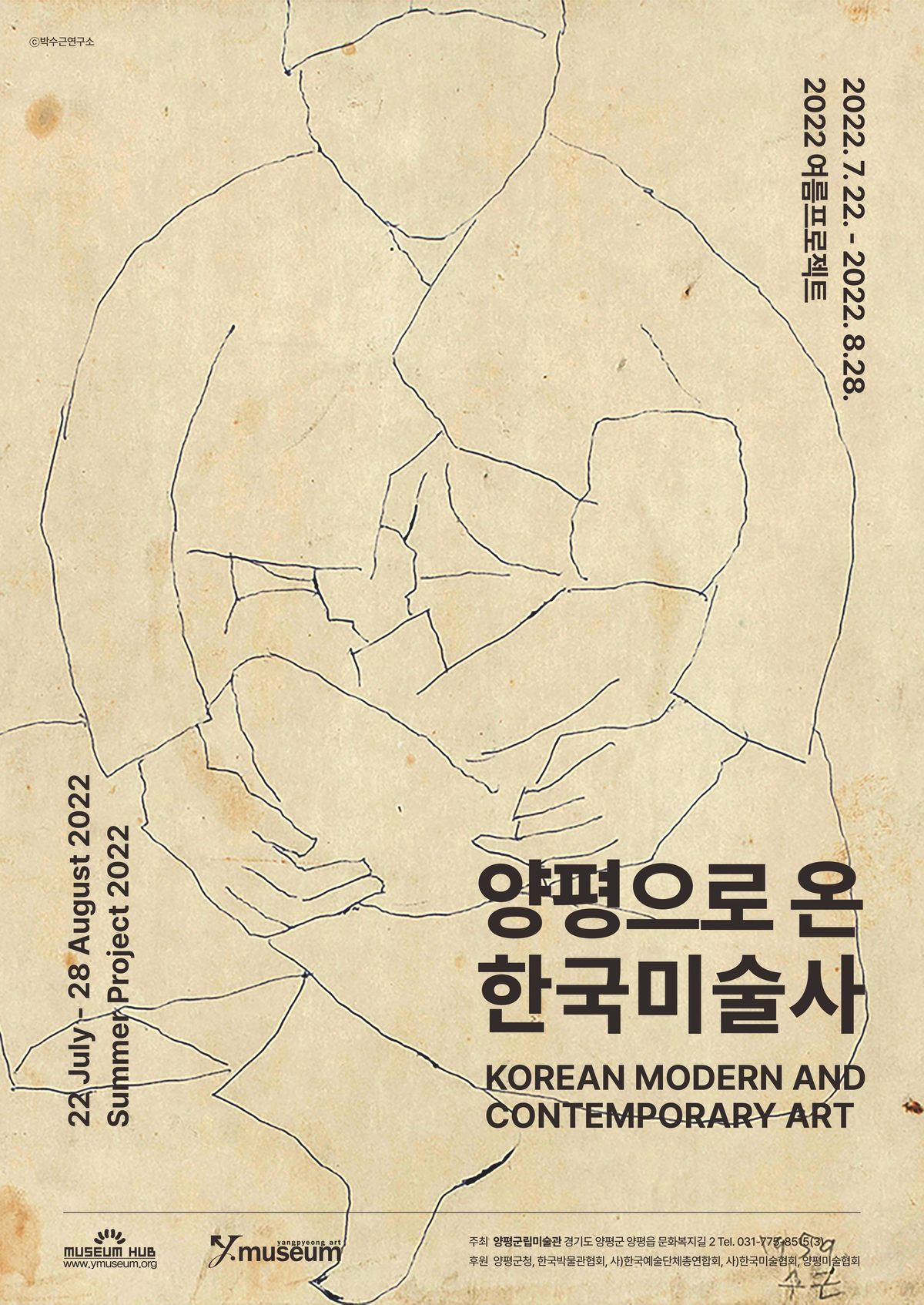전시안내Exhibition
지난 전시
| Korean Modern and Contemporary Art | |
|---|---|
| 기간 | ~ |
| 장소 | Yangpyeong Art Museum |
| 주최 | |
| 후원 | |
2022 Summer Project Korean Modern and Contemporary Art July 22nd - August 28th, 2022 History and art are not separated, and we seek the answer as a human being who was valid in one era. Art has always been recorded in history, and has been operating as the most realistic eye that records history. Art has also become the subject of history by itself due to the ideology and authorism that recorded history, and the zeitgeist that imitated or reproduced that era. Starting from the 'philosophical thinking' of an 'artist', the various art trends and spirit of the times left behind in the various art trends and spirits of modern and contemporary Korean art history. You can look into the times. Starting from the ‘philosophical thinking’ of an ‘artist’, through the works of insight and analysis on society and history combined in the past, present, and future time, you can look into what kind of turning points the various art trends and zeitgeist of modern and contemporary Korean art history have left behind. Therefore, < Korean Modern and Contemporary Art> exhibition unfolds under the following three themes. First, it explores the essence of national beauty with a disciplined spirit even in times of bitterness and seeks to achieve subjectivity in the 'History of Challenges and Responses', second, 'Exploration and Experimentation' which aims to be independent from power and to capture existence in a more tangible way for the autonomy of art in the midst of liberation and division, confrontation and industrialization, and third, 'Art and Reality' which contains the artist's concrete social practice through the visual language of silence and speech in a time of limitations. These intended to be developed as an 'epic perspective of time' that has passed through a mixture of history and art. “Existence becomes history, and an artist who becomes the subject of himself becomes a culture mixed with history.” Time makes history. However, if there is no being, who is the subject of time, history is just a fact. Time is stuffed into history or as a work of art by humans who re-perceive the past as a 'historical fact'. Just as existence becomes possible through stuffed time, art also takes shape with history. In such a case, it is the 'historical fact' that makes the most accurate viewpoint of now and of the present. That historical fact has already become a thing of the past, but it passes through the perspective of the present, which embraces both the movement before existence and the movement beyond existence. It is only through the present moment that the present, which completes the past and the future, becomes possible. When humans use the unit of time, the word, “now”, might be the most perfect. In other words, the ‘narrative perspective of time’, which is the writing of ‘history’, is the background for human beings to exercise the wisdom of art and escape from the pain of history. The greatest consolation that human beings can offer here and now is to reach out to the truth reproduced by creating and sharing art. Human beings want to realize the truth that humans exist based on the sense of time and space of art, and that we are moving into a wonderful world where history and art are mixed as reality, breaking down the boundaries between fantasy and everyday life. Then, in the everyday life, the archetypal world that mankind has dreamed of unfolds. There is comfort in facing a wonderful world where history and art are mixed and completely different worlds are mixed in one time frame. Korean modern and contemporary art, while securing the transcendence that occurs in the encounter with time, confronted the diversified world of the archetypal world in a unit, the everyday life of citizens. At the same time, it has Korean characteristics and makes it possible to encounter the future along with Korean history. Korean contemporary art is still writing another history, not forgetting the truth that contemporary art has a source of origin.
|
|
























